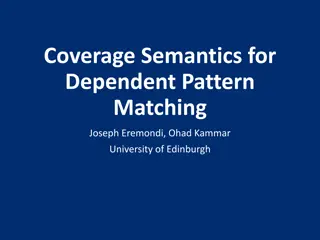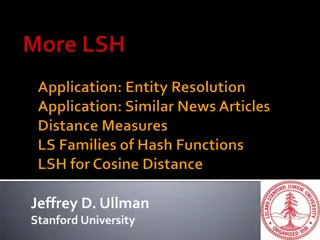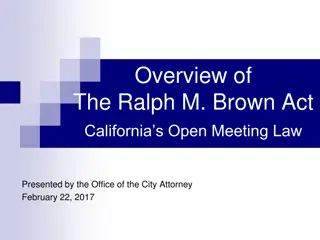
Maximum Bipartite Matching in Graph Theory
Learn about bipartite graphs, bipartite matching, and how to find the maximum bipartite matching in graph theory. Discover the key concepts, examples, and applications, including a sample problem related to job assignments. Explore the importance of this topic in solving optimization problems efficiently.
Download Presentation

Please find below an Image/Link to download the presentation.
The content on the website is provided AS IS for your information and personal use only. It may not be sold, licensed, or shared on other websites without obtaining consent from the author. If you encounter any issues during the download, it is possible that the publisher has removed the file from their server.
You are allowed to download the files provided on this website for personal or commercial use, subject to the condition that they are used lawfully. All files are the property of their respective owners.
The content on the website is provided AS IS for your information and personal use only. It may not be sold, licensed, or shared on other websites without obtaining consent from the author.
E N D
Presentation Transcript
Maximum Bipartite Matching Ralph McDougall 3 February 2018 Comeback tour: 9 March 2019
Definitions A graph is said to be a bipartite graph if it possible to split the nodes into 2 disjoint sets, A and B, such that nodes in set A only have edges leading to nodes in set B A bipartite matching is a bipartite graph such that no 2 edges have a common endpoint The maximum bipartite matching of a bipartite graph is the bipartite matching with the most edges
Example: Bipartite Graph A B 1 6 2 7 3 8 4 9 5
Example: Bipartite Matching A B 1 6 2 7 3 8 4 9 5
Example: NOT Bipartite Matching A B 1 6 2 7 3 8 4 9 5
Example: Maximum Bipartite Matching A B 1 6 2 7 3 8 4 9 5
Things to note If there are m nodes in set A and n nodes in set B, then the number of edges in the Maximum Bipartite Matching has an upper bound of min(m, n) There can be multiple maximum bipartite matchings
How is this useful? Sample problem: n people are applying for m jobs. Each person can only do 1 job and each job can only be done by 1 person. Given a list of jobs that each person is applying for, find the highest number of jobs that can be filled.
Sample of sample Person Job being applied for Alice Accounting Baking Bob Baking Claire Baking Diving Dave Baking Carpentry Diving
Alternate form of sample of sample Person Job Alice Accounting Bob Baking Carpentry Claire Diving Dave
Maximum Bipartite Matching of alternate form of sample of sample Person Job Alice Accounting Bob Baking Carpentry Claire Diving Dave
Solution to sample Alice does Accounting Bob does Baking Claire does Diving Dave does Carpentry
Network Flow The problem of finding a Maximum Bipartite Matching is a special case of the Network Flow problem A flow network is a weighted directed graph where each edge has a maximum capacity. Flow is sent from a source to a sink. The total flow into a node must be the same as the total flow out except for the source and the sink. The task is to maximise the flow that ends at the sink This problem can be solved with the Edmonds-Karp extension of the Ford-Fulkerson algorithm
Edmonds-Karp Find the path with shortest length from the source to the sink where none of the edges on the path are full (augmenting path) Pass as much flow as possible through that path Repeat until there are no more paths from the source to the sink
Analysis This algorithm runs in O(VE2) time Dinic s Algorithm can be used to improve this to O(V2E) when the graph is very dense
Back to Maximum Bipartite Matching To turn the Maximum Bipartite Matching into a Network Flow problem we add a source that is connected to all of the nodes in set A and a sink that is connected to all of the nodes in set B All edges are given a weight of 1 From here, the problem of finding the Maximum Bipartite Matching is clearly the same as finding the maximum Network Flow Since Maximum Bipartite Matching is such a special case of Network Flow, there does exist an algorithm than runs in O(VE)
Algorithm Store the graph as an unweighted directed graph Construct a sink and source as before Use a BFS or DFS to find a path from the source to the sink Reverse the direction of each edge on the path Repeat the process of finding a path and reversing until no more paths exist The Maximum Bipartite Matching is the collection of all edges that are reversed
Analysis The BFS runs in O(E) time The BFS will run at most V times since the number of edges going to the sink is at most V and decreases by 1 every iteration Therefore this algorithm runs in O(VE)






















